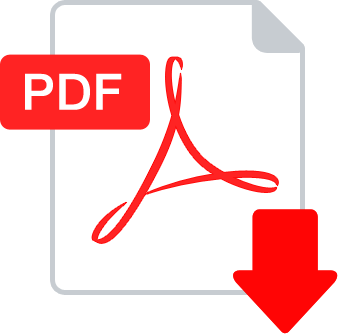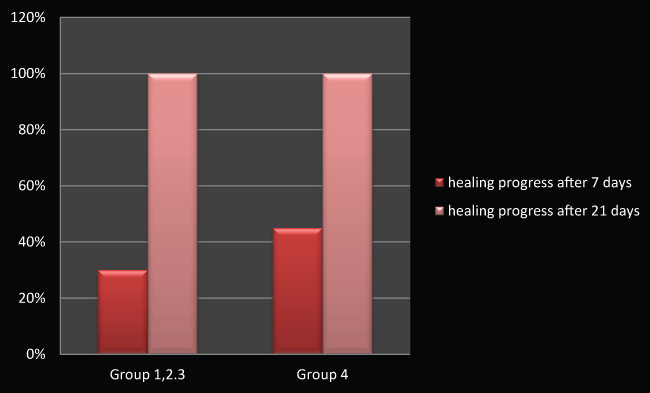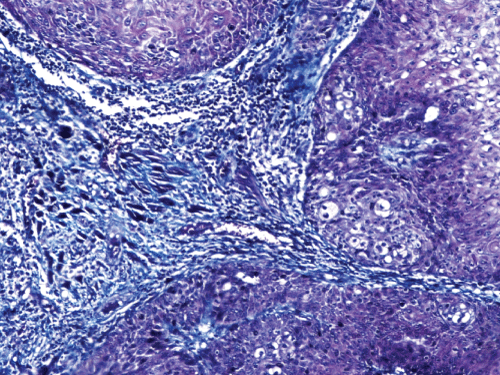International Journal of Pathology and Clinical Research
Myofibroblasts Role in Wound Healing of Εyelid Lesions
Trisevgeni Ntinioti1*, Georgia-Heleni Thomopoulou2, Eugene Danas3, Nikolaos G Kavantzas4, Emmanuel Agapitos4 and Andreas C Lazaris5
1Doctoral fellow, 2nd Department of Opthalmology, "Attikon" General Hospital, School of Medicine, National and Kapodistrian University, Athens, Greece
2Assistant Professor in Cytology, 1st Department of Pathology, School of Medicine, National and Kapodistrian University, Athens, Greece
31st Department of Pathology, School of Medicine, National and Kapodistrian University, Athens, Greece
4Professor in Pathology, 1st Department of Pathology, School of Medicine, National and Kapodistrian University, Athens, Greece
5Associate Professor in Pathology, 1st Department of Pathology, School of Medicine, National and Kapodistrian University, Athens, Greece
*Corresponding author:
Trisevgeni Ntinioti, MD, Doctoral fellow, 2nd Department of Opthalmology, "Attikon" General Hospital, School of Medicine, National and Kapodistrian University, 1 Rimini street, Chaidari, GR-124 62, Athens, Greece, Tel: 00306947687606, E-mail: trisevgeni_n@hotmail.com
Int J Pathol Clin Res, IJPCR-2-038, (Volume 2, Issue 2), Letter to the Editor; ISSN: 2469-5807
Received: April 13, 2016 | Accepted: May 20, 2016 | Published: May 25, 2016
Citation: Ntinioti T, Thomopoulou GH, Danas E, Kavantzas NG, Agapitos E, et al. (2016) Myofibroblasts Role in Wound Healing of Εyelid Lesions. Int J Pathol Clin Res 2:038. 10.23937/2469-5807/1510038
Copyright: © 2016 Ntinioti T, et al. This is an open-access article distributed under the terms of the Creative Commons Attribution License, which permits unrestricted use, distribution, and reproduction in any medium, provided the original author and source are credited.
Abstract
Activated myofibroblasts play an exert role in wound healing after examining 120 specimens of eyelid lesions, we concluded that an increased number of myofibroblasts was detected in inflamed benign neoplasms and this is possibly related to an improvement in the healing process.
Keywords
Myofibroblasts, Wound healing, Eyelid, Inflammatory neoplastic
Introduction
In injured tissues, the repair of the extracellular matrix is organized by activated myofibroblasts. The latter cells support harmonious mechanical tissue organization [1]. At the end of the normal repair process, myofibroblasts disappear by apoptosis but in pathological situations, myofibroblasts likely remain leading to excessive scarring [2,3].
The eyelids are movable folds of tissue the core of which is represented by a tarsal plate, composed of dense connective tissue, embedded in loose connective tissue. Τhe correlation between the healing process of surgically treated eyelid lesions and histological parameters is worth investigating.
Methods
Upon approval by the Bioethics Commission of the School of Medicine of the National and Kapodistrian University of Athens, one hundred and twenty surgical specimens of the eyelids were grouped (Table 1), taking into consideration their inflammatory and/or benign neoplastic nature, the presence or absence of fibrosis and elastic fibers (Masson Trichrome and Verhoeff-van Gieson stains) and the quantitative presence of myofibroblasts (after immunostaining for α-SMA). The number of myofibroblasts was counted among at least 50 high power fields (HPFs, range number of HPFs examined 50-85) by two separate pathologists (G-H.T. and A.C.L). The quantitative differences among the various groups were investigated by basic statistics at the present stage (student's t-test); the level of statistical significance was set at p < 0.05. The healing process was clinically evaluated in periods of 1 week, 3 weeks and one month after surgery.
In all cases, we used exactly the same surgical method. The main goal of surgical treatment was to remove the lesion entirely, with the presence of a healthy part of tissue. The anatomical restoration of the eyelid is known to depend on the extent of the total thickness of the horizontal resection. The complete reconstruction of the anterior and posterior part (separated by the brown line) was accomplished according to the size of the deficit.
Results
Myofibroblasts were identified as single α-SMA-immunopositive spindle shaped cells within inflammed/fibrous tissue (Figure 1). α-SMA was also expressed in vessel walls and bundles of smooth muscle fibers; of course, this expression could be easily disregarded on morphological grounds (Figure 2).
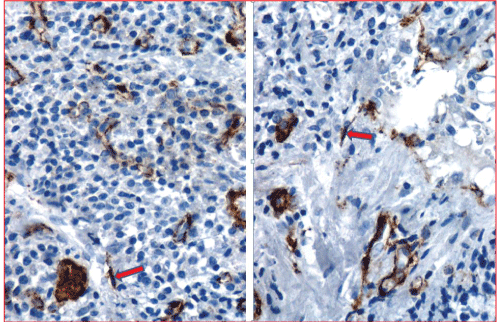
.
Figure 1: Detection of α-SMA-positive myofibroblasts (arrows) among chronic inflammatory cells in the stroma of a papilloma (Immunoperoxidase stain, x400).
View Figure 1
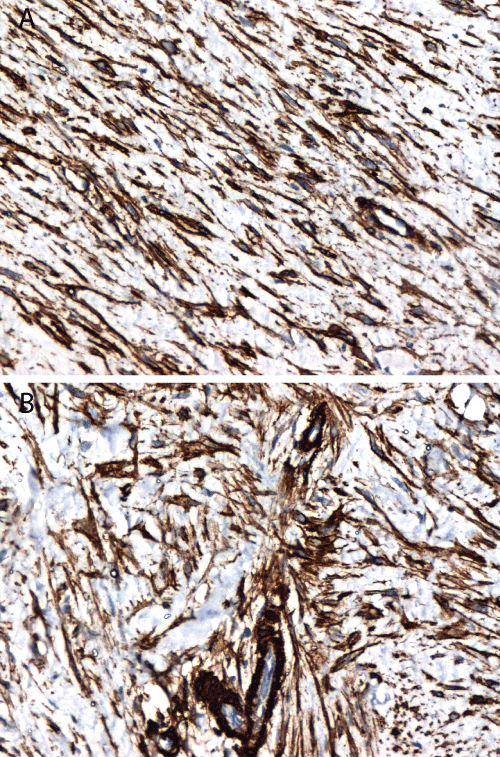
.
Figure 2: Abundant myofibroblasts in the stroma of Group 4 specimens, distinct from a-SMA-positive cells in vessel walls (Immunoperoxidase stain, x400).
View Figure 2
We observed that in inflammed papillomas, myofibroblasts were identified in significantly higher numbers than in the other categories of the examined specimens (Table 1). The presence of inflammation specifically in lesions of neoplastic nature appeared thus to promote the accumulation of myofibroblasts whereas the latter cells tended to be absent in inflammed, non neoplastic lessions and in non inflammed, neoplastic lesions. This finding, among other possible factors, may be related to the former samples' comparatively improved clinical restoration.
![]()
Table 1: Samples distribution. Each group consisted of thirty specimens.
View Table 1
In all groups, the induced wounds expanded after surgery to variable extents. By the 3rd day after surgery, all wounds had an area that approximatelly exceeded 1.5 cm2. In groups 1,2, and 3, the wound area decreased from the 5th day with a relatively rapid rate (30% reduction after 7 days and 100% reduction after 21 days) (Figure 3). Group 4 showed the most rapid rate of wound healing (45% reduction after 7 days and 100% reduction after 21 days) (Figure 3). So, by the end of the 21st day, these wounds were completely closed in all group 4 samples.
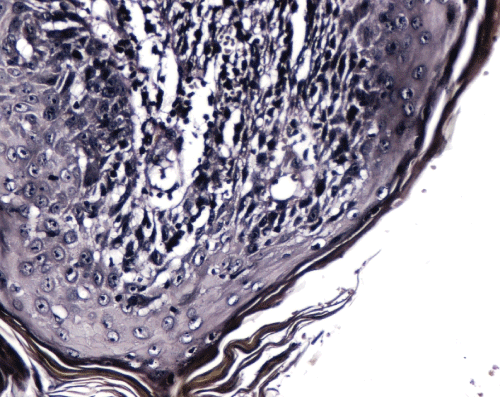
.
Figure 4: Increased amount of elastic fibers in the fibrovascular stalk of an inflammed papilloma (Verhoeff-van Gieson x400).
View Figure 4
Discussion
Wound healing involves the integration of complex biological processes of interaction among several types of cells, intercellular matrix and signaling factors [1,2]. Appropriate concordance of numerous aspects, such as blood clotting, inflammatory cell infiltration, cellular proliferation, neoangiogenesis and remodeling of extracellular matrix, enhances epidermal cell proliferation over dermal granulation tissue [3].
The macroscopic evaluation on the wounds of the eyelids in the four groups showed that there were differences in the time it took the crusts to fall off. Healing was slower among the lesions that exhibited a lack of myofibroblasts (groups 1,2,3). Interestingly, in group 4, where the healing process was faster, the presence of myofibroblasts was accompanied by a considerable amount of elastic fibers (Figure 4 and Figure 5). The presence of myofibroblasts within inflammatory infiltrates might be promoted by tumor-stromal interactions, even in tumors of a benign nature.
References
-
Sarrazy V, Billet F, Micallef L, Coulomb B, Desmouliere A (2011) Mechanisms of pathological scarring: role of myofibroblasts and current developments. Wound Repair Regen 19 Suppl 1: s10-15.
-
Li B, Wang JH (2011) Fibroblasts and myofibroblasts in wound healing: force generation and measurement. J Tissue Viability 20: 108-120.
-
Ludovic Micallef, Nicolas Vedrenne, Fabrice Billet, Bernard Coulomb, Ian A Dardy, et al. (2012) The myofibroblast, multiple origins for major roles in normal and pathological tissue repair. Fibrogenesis and tissue repair 5: s5.



